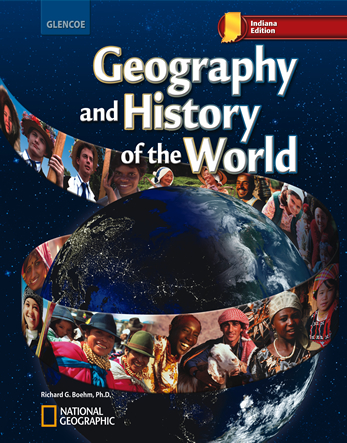

Geography and History of the World © 2010 Indiana EditionChapter 15: Cultural Geography of RussiaChapter OverviewsAn ethnically diverse country, most people in Russia are ethnic Russians living in European Russia. Many non-Russians have formed independent countries or seek autonomy since the breakup of the Soviet Union, which had replaced centuries of czarist rule. Today religion and the arts are making a comeback, while education and the healthcare system are struggling.Population and Culture More than 100 ethnic groups live in Russia, making it a country with one of the widest varieties of ethnic groups. More than 80 percent, however, are ethnic Russians, part of the larger ethnic group of Slavs. Other families of ethnic groups include Causasian and Turkic peoples. Most of the population is concentrated west of the Ural Mountains, while parts of Siberia have a population of less than 1 person per square mile. The population of Russia began declining after the Soviet breakup because of inadequate health care. The Eastern Orthodox Church, Russia's dominant church, is enjoying a resurgence after the full of the soviet Union. Other religions include other sects of Christianity, Islam, Judaism, and Buddhism. During the Soviet era, mandatory education was focused on technology. Today curriculums are more balanced, but school budget limits and teacher burnart still pose problems. Negative lifestyle choices and the HIV/AIDS apedermic place extra strain on a health-care system that continues to struggle under post-Soviet government control. The arts, however, which enjoyed a long tradition but were severely limited under Soviet rule, are making a strong comeback. History and Government Over the next five centuries Russia continued to expand its borders into Siberia in the east and toward the Black Sea in the south. Growing discontent with Czarist Russia's strict governmental controls and social and economic inequalities finally culminated in the Russian Revolution in 1917. Forty years of Cold War, the overthrow of communist rulers in Eastern Europe in 1989, and a weakening economy led to the collapse of Soviet control. Nationalists in the non-Russian Baltic Republics declared independence, eventually leading to the breakup of the Soviet Union and the new Commonwealth of Independent States (CIS) in 1991. After transforming from a command economy to a market economy, the Russian economy is slowly improving. However, Russia today is still threatened by separatist movements and ethnic conflict. |  |















